Difference between Nokia Lumia 820 and Nexus 4
Key difference: One of the first smartphones under the brand is the Nokia Lumia 820. The Nokia Lumia 820 was first of the first phones to be developed running on Windows Phone 8. It was launched in November 2012, as a slightly cheaper alternative to the Nokia 920. The Nexus 4 is Google's fourth Nexus-branded Android smartphone. It was produced in collaboration with LG Electronics. The phone runs on the Android 4.2 (Jelly Bean) operating system, which was launched with the phone.
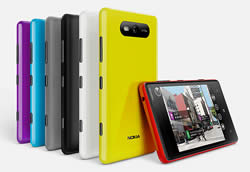
Nokia is a multinational communications and information technology corporation based in Helsinki, Finland. Nokia’s phones have been famously known as being simple and durable. In 2012, it was the world’s second largest mobile phone maker by unit sales, following Samsung. However, the sales of Nokia have been decreasing as more and more of the market shifts towards smartphones such as iPhones and Androids. In an attempt to offset their decreasing sales, Nokia tied up with Microsoft to release its own line of smartphones, the Nokia Lumia running on Windows Phone Operating Software.
One of the first smartphones under the brand is the Nokia Lumia 820. The Nokia Lumia 820 was first of the first phones to be developed running on Windows Phone 8. It was launched in November 2012, as a slightly cheaper alternative to the Nokia Lumia 920. It has a 4.3 inch display with a resolution of 480 x 800 pixels. It is powered by a Qualcomm MSM8960 Snapdragon Dual-core 1.5 GHz Krait processor and a 1 GB RAM. The phone has 8 GB internal memory and an external memory expandable up to 64 GB.
Nokia Lumia 820 features an 8 MP primary camera with autofocus and dual-LED flash, as well as Carl Zeiss optics. It also has a VGA secondary front-facing camera for self photo shots and video calling. The phone is available in a variety of bright colors, such as black, gray, red, yellow, white, blue, and violet. In fact, the phone comes with back panels in these colors allowing the user to change the phone’s color every few days.
The newest and most distinguishing feature of the Lumia 820 is that the phone is capable of wireless charging. However, the wireless charging mat is not included with the phone and has to be purchased separately.
However, the phone has been criticized as being chunky and heavy. Another issue with the phone, in fact all the Windows phones, is that it comes with the Internet Explorer browser built-in, which can be quite lagging at times, and the phones do not support any other browsers. Furthermore, the collection of apps available on Windows is quite limited, especially as compared to the apps available for Android and Apple.
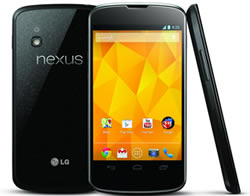 Android is an open source software, which means that the code is freely available for modification and distribution by device manufacturers, wireless carriers and enthusiast developers. Among the number of various companies, Google has also launched its own line of smartphones based on Android, called the Google Nexus. Each device in the Nexus line is produced via collaboration between Google and a leading original equipment manufacturer (OEM) partner.
Android is an open source software, which means that the code is freely available for modification and distribution by device manufacturers, wireless carriers and enthusiast developers. Among the number of various companies, Google has also launched its own line of smartphones based on Android, called the Google Nexus. Each device in the Nexus line is produced via collaboration between Google and a leading original equipment manufacturer (OEM) partner.
The Nexus devices in general have an advantage over other devices in that the Android in the Nexus devices is pure. I.e. the Android does not have any manufacturer or wireless carrier modifications to it, such as a custom graphical user interface. The Android also has an unlockable bootloader to allow further development and end-user modification, all of which is usually blocked on other Android smartphones.
The Nexus 4 is Google's fourth Nexus-branded Android smartphone. It was produced in collaboration with LG Electronics. The phone features a 1.5 GHz quad-core Snapdragon S4 Pro processor, 2 GB of RAM, 8 or 16 GB of internal storage, front facing 1.3 megapixel camera and an 8 megapixel rear camera and a micro-SIM card tray. The phone runs on the Android 4.2 (Jelly Bean) operating system, which was launched with the phone. The phone also features a new camera technology, called the Photo Sphere. This allows one to take 360 deg Panorama shots.
The information for the detailed table about the two phones has been taken from the Nokia website, the Google Nexus website, cnet.co.uk, and GSMArena.com.
|
|
Nokia Lumia 820 |
Nexus 4 |
|
Launch Date |
November 2012 |
November 13, 2012 |
|
Company |
Nokia |
Google; designed in collaboration with and manufactured by LG Electronics. |
|
Size |
123.8 x 68.5 x 9.9 mm, 83.5 cc (4.87 x 2.70 x 0.39 in) |
133.9 x 68.7 x 9.1 mm (5.27 x 2.70 x 0.36 in) |
|
Display |
AMOLED capacitive touchscreen, 16M colors |
True HD IPS Plus capacitive touchscreen, 16M colors |
|
Screen |
480 x 800 pixels, 4.3 inches (~217 ppi pixel density) |
768 x 1280 pixels, 4.7 inches (~318 ppi pixel density) |
|
Protection |
ClearBlack display |
Corning Gorilla Glass 2 |
|
Weight |
160 g (5.64 oz) |
139g (4.90 oz) |
|
2G Network |
GSM 850 / 900 / 1800 / 1900 |
GSM 850 / 900 / 1800 / 1900 |
|
3G Network |
HSDPA 850 / 900 / 1900 / 2100 |
HSDPA 850 / 900 / 1700 / 1900 / 2100 |
|
4G Network |
LTE 800 / 900 / 1800 / 2100 / 2600 |
No |
|
GUI |
Windows Phone 8 |
Pure Android |
|
CPU speed |
Dual-core 1.5 GHz Krait |
Quad-core 1.5 GHz Krait |
|
GPU |
Adreno 225 |
Adreno 320 |
|
OS |
Microsoft Windows Phone 8 |
Android OS, v4.2 (Jelly Bean), upgradable to v4.2.2 (Jelly Bean) |
|
Chipset |
Qualcomm MSM8960 Snapdragon |
Qualcomm APQ8064 Snapdragon |
|
RAM |
1 GB RAM |
2 GB RAM |
|
SIM Size |
Micro-SIM |
Micro-SIM |
|
Internal Memory |
8 GB |
8/16 GB storage |
|
Expandable Memory |
microSD, up to 64 GB |
None |
|
Sensors |
Accelerometer, gyro, proximity, compass |
Accelerometer, gyro, proximity, compass, barometer |
|
Connectivity |
Micro-USB charging connector, 3.5 mm audio connector, Micro-USB-B connector, USB 2.0, Bluetooth 3.0, Wi-Fi, NFC, Wi-Fi Channel bonding, Wireless charging |
WiFi 802.11 a/b/g/n, Bluetooth, NFC (Android Beam), Unlocked GSM/UMTS/HSPA+, GSM/EDGE/GPRS, 3G, HSPA+ 42, Wireless charging, SlimPort (TM) |
|
Data |
GPRS, EDGE, WLAN, Bluetooth, USB, NFC |
WiFi, NFC, GPRS, EDGE, USB |
|
Speed |
HSDPA, 42 Mbps; HSUPA, 5.76 Mbps; LTE, Cat3, 50 Mbps UL, 100 Mbps DL |
DC-HSDPA, 42 Mbps; HSDPA, 21 Mbps; HSUPA, 5.76 Mbps |
|
WLAN |
Wi-Fi 802.11 a/b/g/n, dual-band, Wi-Fi Direct |
Wi-Fi 802.11 a/b/g/n, dual-band, DLNA, Wi-Fi hotspot |
|
Bluetooth |
Yes, v3.1 with A2DP, EDR |
Bluetooth v4.0 with A2DP |
|
USB |
microUSB v2.0 |
microUSB (SlimPort) v2.0 |
|
Primary Camera |
8 MP, 3264x2448 pixels |
8 MP, 3264 x 2448 pixels, autofocus, LED flash |
|
Secondary Camera |
Yes, VGA |
1.3 MP |
|
Video |
Yes, 1080p@30fps, video stabilization |
1080p@30fps |
|
Camera Features |
Carl Zeiss optics, autofocus, dual-LED flash, Geo-tagging, touch focus |
Touch focus, geo-tagging, face detection, photo sphere |
|
Sound Enhancement |
Dolby Headphone sound enhancement, Active noise cancellation with dedicated mic |
SNS integration Active noise cancellation with dedicated mic |
|
Audio supported formats |
Codecs: MP3, AMR-WB, AMR-NB, WMA 10 Pro, WMA 9, AAC LC, AAC+/HEAAC, eAAC+/HEAACv2 Audio playback file formats: ASF, MP4, AAC, AMR, MP3, M4A, WMA, 3GP, 3G2 |
MP3/WAV/eAAC+/AC3 player |
|
Video supported formats |
Video playback codecs: VC-1, H.264/AVC, H.263, MPEG-4 Video playback file formats: MP4, WMV, 3GP, M4V Video recording formats: MP4/H.264 |
MP4/H.264/H.263 player |
|
Battery Capacity |
Li-Ion 1650 mAh battery (BP-5T) |
Non-removable Li-Po 2100 mAh battery |
|
Available Colors |
Black, Gray, Red, Yellow, White, Blue, Violet |
Black |
|
Messaging |
SMS (threaded view), MMS, Email, Push Email, IM |
SMS(threaded view), MMS, Email, Push Mail, IM, RSS |
|
Browser |
HTML5 |
HTML5 |
|
Radio |
No |
No |
|
GPS |
Yes, with A-GPS support and GLONASS |
A-GPS support and GLONASS |
|
Java |
No |
Java MIDP emulator |
|
Additional Features |
|
|
Image Courtesy: blogs.computerworld.com, nokia.com





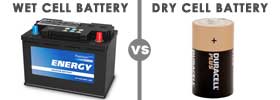
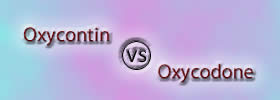
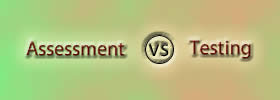
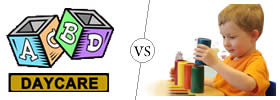
Add new comment